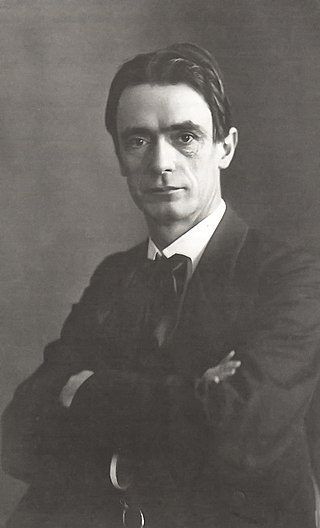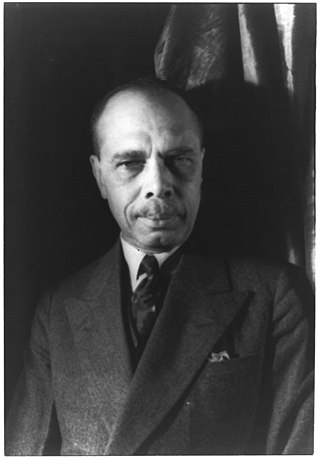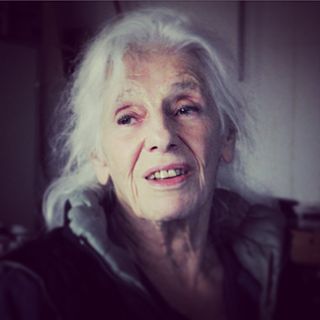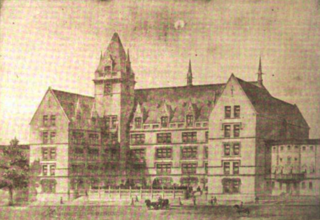Ideology
The Phalanstery's ideology, rights, benefits, and codes of conduct were detailed in a Manifesto, written by Richard, and expressed the fundamental purpose of the organization as:
- Members shall follow the "Practice of the Eightfold Way on the Path" and exercise "Creativity in Practice of the Path", executing a "self documented life work on the way".
The Manifesto and the Phalanstery itself were influenced by a diverse range of texts, religions and spiritual practices, specifically the teachings of Fourier, who recommended the reorganization of society into small communities (phalansteries), living in common. The Phalanstery was concerned with confronting the ethos of society, interjecting spiritual aspects into everyday life, and pioneering what is now referred to as 'new age' ideas. Richard viewed creativity as "a mantic procedure of the intuitive function" and was dedicated to merging life with art by building a supportive, nurturing community of like-minded artists.
In order to spread the message of the Phalanstery, Richard Tyler would sell publications as "The Uranian Press", along with political trinkets, from a pushcart which he would walk from his basement studio on 326 E. 4th Street to the corner of Judson Church, at Lafayette and E 4th Streets.
Artists who were influenced by, the Phalanstery was influenced by the contemporary psychedelic movement and made contact with innovative creators and thinkers including Peter Shauman, Axel Gross, Timothy Leary, Monroe Wheeler, Al Hensson, Claes Oldenburg, Ornette Coleman, Thom D'Vita, Nick Bubash, and Ed Hardy.
Anthroposophy is a spiritual new religious movement which was founded in the early 20th century by the esotericist Rudolf Steiner that postulates the existence of an objective, intellectually comprehensible spiritual world, accessible to human experience. Followers of anthroposophy aim to engage in spiritual discovery through a mode of thought independent of sensory experience. Though proponents claim to present their ideas in a manner that is verifiable by rational discourse and say that they seek precision and clarity comparable to that obtained by scientists investigating the physical world, many of these ideas have been termed pseudoscientific by experts in epistemology and debunkers of pseudoscience.

Rudolf Joseph Lorenz Steiner was an Austrian occultist, social reformer, architect, esotericist, and claimed clairvoyant. Steiner gained initial recognition at the end of the nineteenth century as a literary critic and published works including The Philosophy of Freedom. At the beginning of the twentieth century he founded an esoteric spiritual movement, anthroposophy, with roots in German idealist philosophy and theosophy. His teachings are influenced by Christian Gnosticism. Many of his ideas are pseudoscientific. He was also prone to pseudohistory.

Outsider art is art made by self-taught individuals who are untrained and untutored in the traditional arts with typically little or no contact with the conventions of the art worlds.

James Weldon Johnson was an American writer and civil rights activist. He was married to civil rights activist Grace Nail Johnson. Johnson was a leader of the National Association for the Advancement of Colored People (NAACP), where he started working in 1917. In 1920, he was chosen as executive secretary of the organization, effectively the operating officer. He served in that position from 1920 to 1930. Johnson established his reputation as a writer, and was known during the Harlem Renaissance for his poems, novel and anthologies collecting both poems and spirituals of Black culture. He wrote the lyrics for "Lift Every Voice and Sing", which later became known as the Black National Anthem, the music being written by his younger brother, composer J. Rosamond Johnson.

Josef Albers was a German-born American artist and educator who is considered one of the most influential 20th-century art teachers in the United States. Born in 1888 in Bottrop, Westphalia, Germany, into a Roman Catholic family with a background in craftsmanship, Albers received practical training in diverse skills like engraving glass, plumbing, and wiring during his childhood. He later worked as a schoolteacher from 1908 to 1913 and received his first public commission in 1918 and moved to Munich in 1919.

The Black Arts Movement (BAM) was an African American-led art movement that was active during the 1960s and 1970s. Through activism and art, BAM created new cultural institutions and conveyed a message of black pride. The movement expanded from the incredible accomplishments of artists of the Harlem Renaissance.
Ithell Colquhoun was a British painter, occultist, poet and author. Stylistically her artwork was affiliated with surrealism. In the late 1930s, Colquhoun was part of the British Surrealist Group before being expelled because she refused to renounce her association with occult groups.

The Studio Museum in Harlem is an American art museum devoted to the work of artists of African descent. The museum's galleries are currently closed in preparation for a building project that will replace the current building, located at 144 West 125th Street between Adam Clayton Powell Jr. Boulevard and Lenox Avenue in Harlem, Manhattan, New York City, with a new one on the same site. Founded in 1968, the museum collects, preserves and interprets art created by African Americans, members of the African diaspora, and artists from the African continent. Its scope includes exhibitions, artists-in-residence programs, educational and public programming, and a permanent collection.

Faith Ringgold was an American painter, author, mixed media sculptor, performance artist, and intersectional activist, perhaps best known for her narrative quilts.

Dorothea Margaret Tanning was an American painter, printmaker, sculptor, writer, and poet. Her early work was influenced by Surrealism.
The Tyler School of Art and Architecture is based at Temple University, a large, urban, public research university in Philadelphia, Pennsylvania. Tyler currently enrolls about 1,350 undergraduate students and about 200 graduate students in a wide variety of academic degree programs, including architecture, art education, art history, art therapy, ceramics, city and regional planning, community arts practices, community development, facilities management, fibers and material studies, glass, graphic and interactive design, historic preservation, horticulture, landscape architecture, metals/jewelry/CAD-CAM, painting, photography, printmaking, sculpture and visual studies.

The German Hamburg School of Astrology is a school of astrology based on the teachings of surveyor, astrologer and amateur astronomer Alfred Witte. It is characterized by use of astrological midpoints and eight astronomically-deduced hypothetical points, expanding the framework beyond traditional astrology.

The Children’s Museum of Manhattan is located on the Upper West Side of Manhattan in New York City. It was founded by Bette Korman, under the name GAME, in 1973. The museum became the Children’s Museum of Manhattan in the 1980s and moved to its current location on West 83rd Street in 1989. In 2018, the museum announced a plan to relocate to a larger space on 96th Street and Central Park West.
American modernism, much like the modernism movement in general, is a trend of philosophical thought arising from the widespread changes in culture and society in the age of modernity. American modernism is an artistic and cultural movement in the United States beginning at the turn of the 20th century, with a core period between World War I and World War II. Like its European counterpart, American modernism stemmed from a rejection of Enlightenment thinking, seeking to better represent reality in a new, more industrialized world.

Josephine Gail Baer is an American painter associated with minimalist art. She began exhibiting her work at the Fischbach Gallery, New York, and other venues for contemporary art in the mid-1960s. In the mid-1970s, she turned away from non-objective painting. Since then, Baer has fused images, symbols, words, and phrases in a non-narrative manner, a mode of expression she once termed "radical figuration." She lives and works in Amsterdam, Netherlands.

The West Harlem Art Fund, Inc. is a public art and media organization based in the City of New York, founded in 1998. Savona Bailey-McClain is its Executive Director and Chief Curator.

The Wadleigh High School for Girls, which was established by the NYC Board of Education in 1897 and moved into its new building in Harlem in September 1902 It was the first public high school for girls in New York City. At the time, public secondary education for girls was considered highly novel and perhaps a bit scandalous. Newspapers considered it newsworthy enough to devote many stories to describing classroom scenes of girls receiving “higher” education. The building is now shared among several schools including the Wadleigh Secondary School for the Performing and Visual Arts, the Frederick Douglass Academy II, and Success Academy Harlem West.
Wadsworth Aikens Jarrell is an American painter, sculptor and printmaker. He was born in Albany, Georgia, and moved to Chicago, Illinois, where he attended the Art Institute of Chicago. After graduation, he became heavily involved in the local art scene and through his early work he explored the working life of African-Americans in Chicago and found influence in the sights and sounds of jazz music. In the late 1960s he opened WJ Studio and Gallery, where he, along with his wife, Jae, hosted regional artists and musicians.

The Chicago Black Renaissance was a creative movement that blossomed out of the Chicago Black Belt on the city's South Side and spanned the 1930s and 1940s before a transformation in art and culture took place in the mid-1950s through the turn of the century. The movement included such famous African-American writers as Richard Wright, Margaret Walker, Gwendolyn Brooks, Arna Bontemps, and Lorraine Hansberry, as well as musicians Thomas A. Dorsey, Louis Armstrong, Earl Hines and Mahalia Jackson and artists William Edouard Scott, Elizabeth Catlett, Katherine Dunham, Charles Wilbert White, Margaret Burroughs, Charles C. Dawson, Archibald John Motley, Jr., Walter Sanford, and Eldzier Cortor. During the Great Migration, which brought tens of thousands of African-Americans to Chicago's South Side, African-American writers, artists, and community leaders began promoting racial pride and a new black consciousness, similar to that of the Harlem Renaissance. Unlike the Harlem Renaissance, the Chicago Black Renaissance did not receive the same amount of publicity on a national scale. Among the reasons for this are that the Chicago group participants presented no singularly prominent "face", wealthy patrons were less involved, and New York City—home of Harlem—was the higher profile national publishing center.

Dindga McCannon is an African-American artist, fiber artist, muralist, teacher author and illustrator. She co-founded the collective Where We At, Black Women Artists in 1971.














